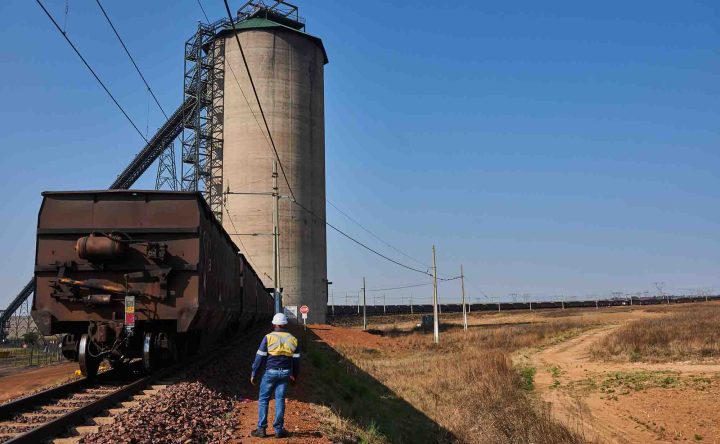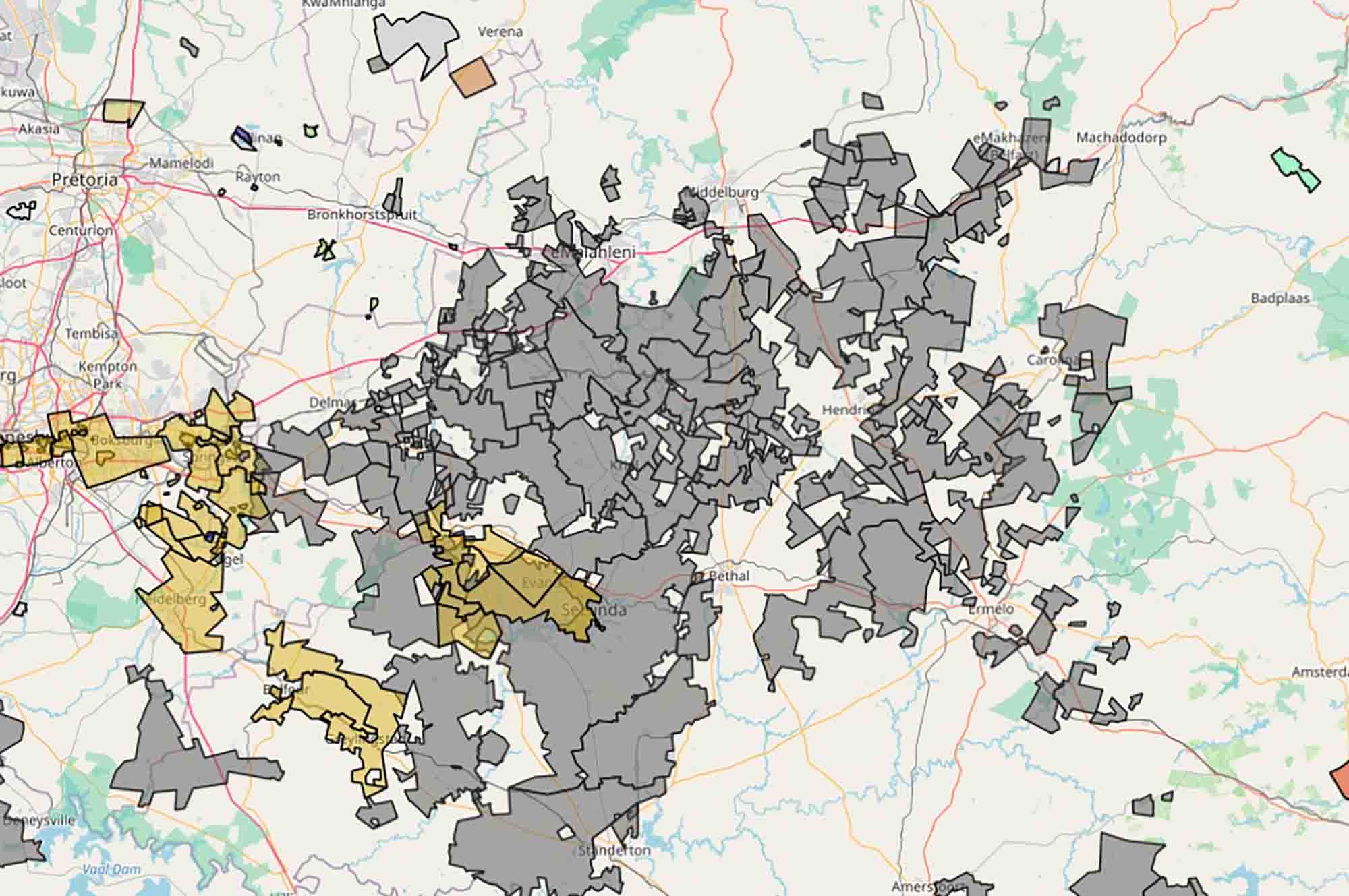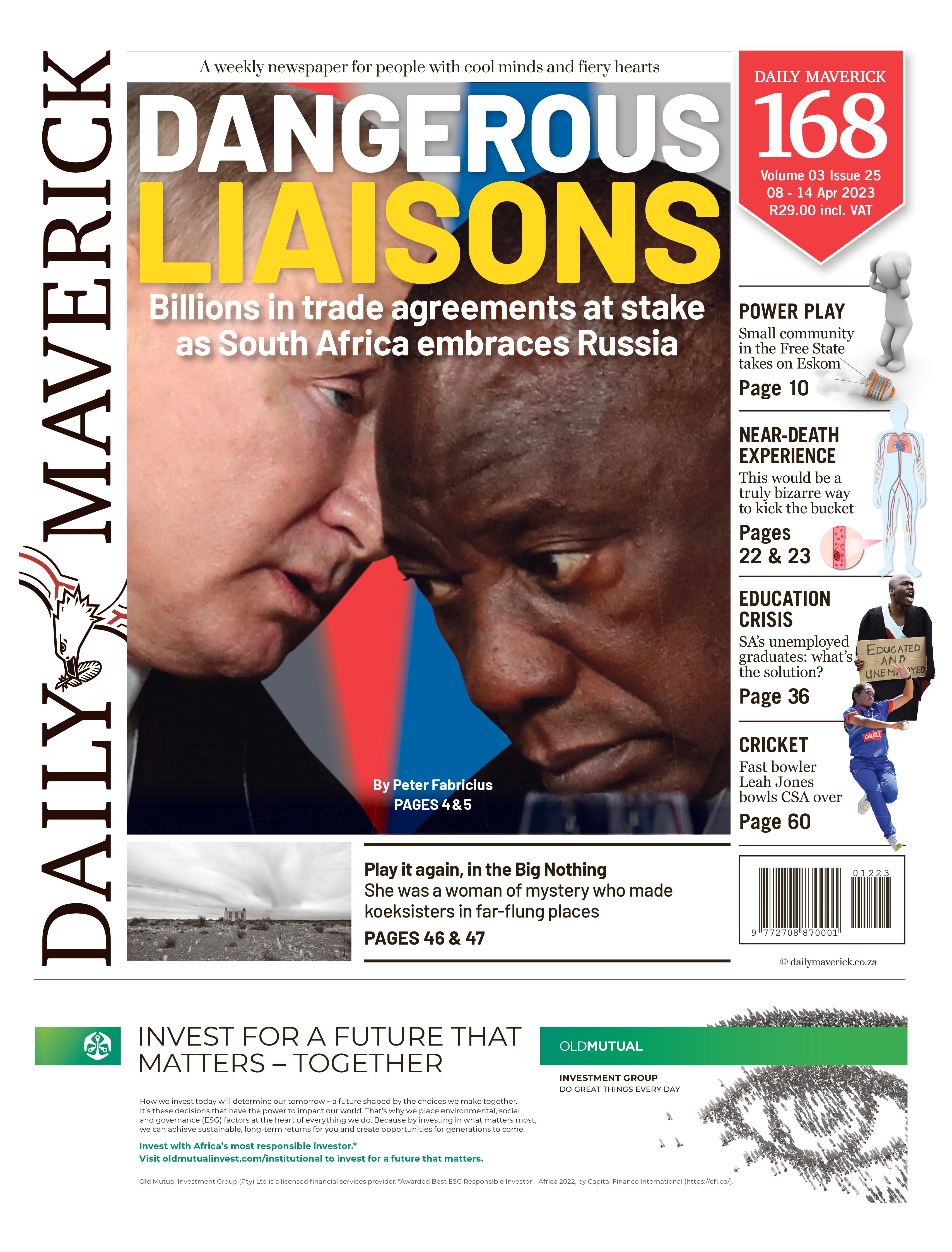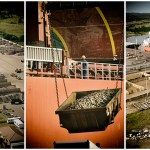MINING RIGHTS
Mpumalanga coal carve-up threatens roll-out of renewable energy projects

A new map shows how much of the eastern Highveld is set aside for the mining of fuel for power stations.
Mapping by consultancy AmaranthCX vividly shows the scale of coal mining and the granting of rights linked to the sector on the Mpumalanga Highveld – a state of affairs that threatens the roll-out of renewable energy projects and, possibly, agriculture in a fertile section of South Africa’s grain belt.
The map is a project by AmaranthCX director Paul Miller to fill the transparency void created by South Africa’s lack of a proper mining cadastre.
Read more in Daily Maverick: Explainer: A mining cadastre and public transparency
After years of delays, the Department of Mineral Resources and Energy (DMRE) is tendering to procure one, but it will take at least a year before anything happens.
The AmaranthCX map, put together from sources such as Google Maps and disclosures by listed companies, shows that most of the Mpumalanga Highveld – from Gauteng to Machadodorp – has been parcelled out for coal mining. It is a striking picture most South Africans are unaware of. (On the map, coal mining areas are shaded in grey.)
Aside from environmental red flags, the map raises concerns about renewable energy and agriculture.
For renewable energy projects, Mpumalanga is vital. Because of the coal deposits found there, it is the heart of South Africa’s minerals-industrial complex developed under apartheid, the region where grid capacity is concentrated. The Northern Cape and the Karoo are far better regions for solar power, but Mpumalanga is the most effective place to connect to the grid as coal-fired plants are decommissioned. And it’s still better than, say, Denmark for solar power.
But much of the land that could be used for renewable projects in the province’s Highveld has been “sterilised” for such purposes.
Section 53(1) of the Mineral and Petroleum Resources Development Act (MPRDA) hold that “any person who intends to use the surface of any land in any way which may be contrary to any object of this Act or which is likely to impede any such object must apply to the Minister for approval in the prescribed manner”.
It does not apply to farming or the use of land that “lies within an approved town-planning scheme”.
“As I understand – agricultural land outside of a declared town planning scheme may not be used for any purpose than agricultural or incidental to agriculture without making a Section 53 application,” Paul Miller, the director of AmaranthCX, told Daily Maverick.
“The difficulty which applicants under section 53 face in practice is that certain information required under these regulations is not readily available. For example, applicants will be required to confirm, inter alia, whether holders of prospecting, mining, exploration or production rights within a two-kilometre radius of the application area have been identified, and if so, whether they have been consulted and/or objected to the proposed land development,” he said.
So that creates a regulatory nightmare that must be navigated through the DMRE, which is not famed for its efficiency.
“In our experience, applicants are only made aware of whether any parties hold mineral rights in relation to the application area (and possibly the surrounding area) once the section 53 application is processed by the DMRE, and the applicants have been directed by the DMRE to consult with any such parties who hold or have applied for rights under the MPRDA,” Miller said.
“So without a cadastre renewable energy developers have to ask the DMRE where the prospecting and mining rights are so that the can consult with them – but just as with mining right and prospecting right applications, it is really difficult for the officials to conduct the required geospatial investigation as the data is spread across SAMRAD (the DMRE’s dysfunctional mine licensing system), the Mining Titles Office and paper files in the 14 regional offices and the head office.”
This means that the lack of a functional cadastre is not just a deterrent to investment in the mining sector. It is an obstacle to renewable energy projects where they are needed most.
The extent of coal mining is also a food security threat at a time of a cost of living crisis and rising hunger.
“The expansion of mining in Mpumalanga remains a threat/or major competitor to agriculture in the province, specifically maize fields. In the 2010’s research by the Bureau for Food and Agricultural Policy (BFAP) suggested that we could lose nearly a million tonnes of maize production in the province if mining were to expand aggressively. Thus, we need to increase agricultural production, mainly grains and oilseeds, also in provinces such as the Eastern Cape. This would ensure that we make up for any lost hectares or tonnage of production in Mpumalanga,” said Wandile Sihlobo, chief economist at the Agricultural Business Chamber of South Africa.
“Still, one has to view this matter today in a context of the green agenda, where coal mining may not expand aggressively as we thought in the 2010s, and under that scenario, there wouldn’t be major competition on agricultural land. There are also regulations protecting agricultural land,” he said.
Coal is gradually being starved of the capital it needs for survival as a growing number of banks stop financing new projects involving the fossil fuel because of its links to climate change.
But mining for coal is not going to stop anytime soon in Mpumalanga, and it still provides about 90% of the power for failing Eskom. Meanwhile, South Africa needs a regulatory environment to enable the fast addition of renewable capacity to the grid. And that requires a proper mining cadastre to shine the light of transparency on the allocation of mineral rights in a critical region that has mostly been carved up for coal. DM168
This story first appeared in our weekly Daily Maverick 168 newspaper, which is available countrywide for R25.



















Renewables will destroy what is left of this country, or should one day, what the ANC has not yet got it’s paws on